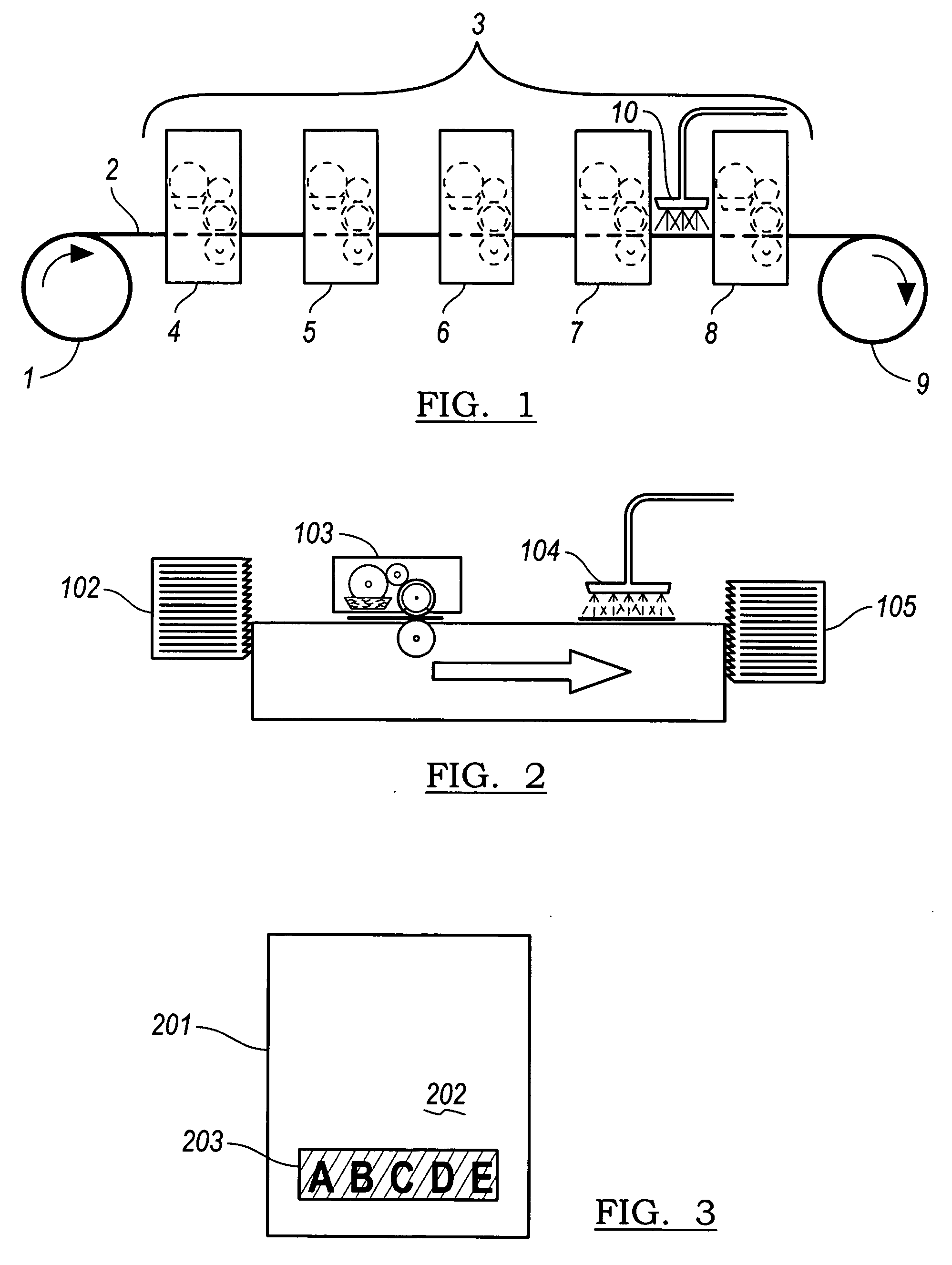System and method for ink jet printing of solvent/oil based inks using ink-receptive coatings
a technology ink-receptive coatings, which is applied in the direction of printing, duplicating/marking methods, printing, etc., can solve the problems of slow evaporation of solvent/oil based inks, the inability to quickly dry printed ink on the substrate, and the number of heads used, etc., to achieve the effect of improving the reliability of the dod printing device, shortening the apparent dry time of ink
- Summary
- Abstract
- Description
- Claims
- Application Information
AI Technical Summary
Benefits of technology
Problems solved by technology
Method used
Image
Examples
Embodiment Construction
[0015] The following description of the preferred embodiment(s) is merely exemplary in nature and is in no way intended to limit the invention, its application, or uses.
[0016] The inventive system and method provide a means of printing solvent- and / or oil-based ink jet ink in selected areas of nonabsorbent and semi-nonabsorbent substrates. The system has a press with a coating station having a printing unit and, optionally, a heat or radiative source for applying an ink-receptive coating, optionally formulated to provide an aesthetically pleasing appearance as explained further below, to the desired area or areas of the substrate and then drying or curing the coating and a CIJ, TIJ, or PIJ printer positioned to apply a variable print in the coated area. Referring first to FIG. 1, a web 2 of a nonabsorbent and semi-nonabsorbent substrate unwinds from roll 1, passes through press 3 having five printing stations 4, 5, 6, 7, and 8 and rolls up on roll 9. Press 3 may, for example, print...
PUM
| Property | Measurement | Unit |
|---|---|---|
| particle size | aaaaa | aaaaa |
| particle size | aaaaa | aaaaa |
| particle size | aaaaa | aaaaa |
Abstract
Description
Claims
Application Information
 Login to View More
Login to View More - R&D
- Intellectual Property
- Life Sciences
- Materials
- Tech Scout
- Unparalleled Data Quality
- Higher Quality Content
- 60% Fewer Hallucinations
Browse by: Latest US Patents, China's latest patents, Technical Efficacy Thesaurus, Application Domain, Technology Topic, Popular Technical Reports.
© 2025 PatSnap. All rights reserved.Legal|Privacy policy|Modern Slavery Act Transparency Statement|Sitemap|About US| Contact US: help@patsnap.com


